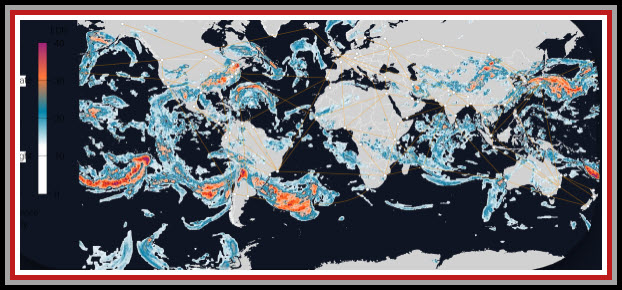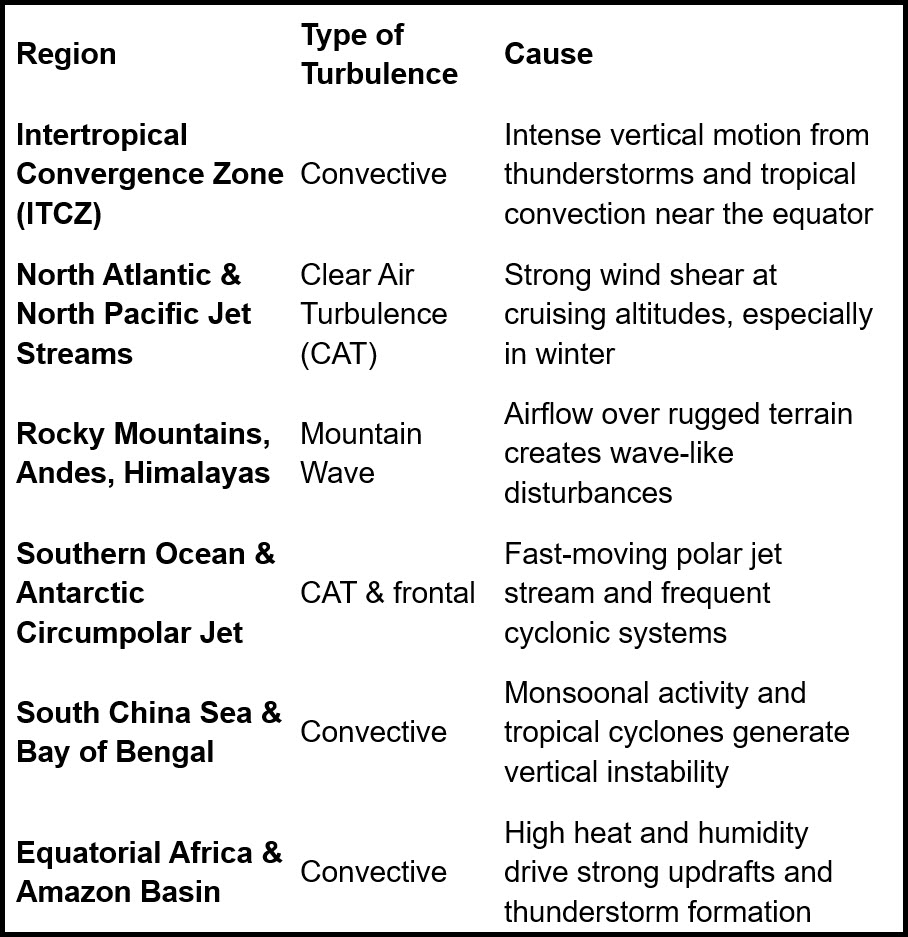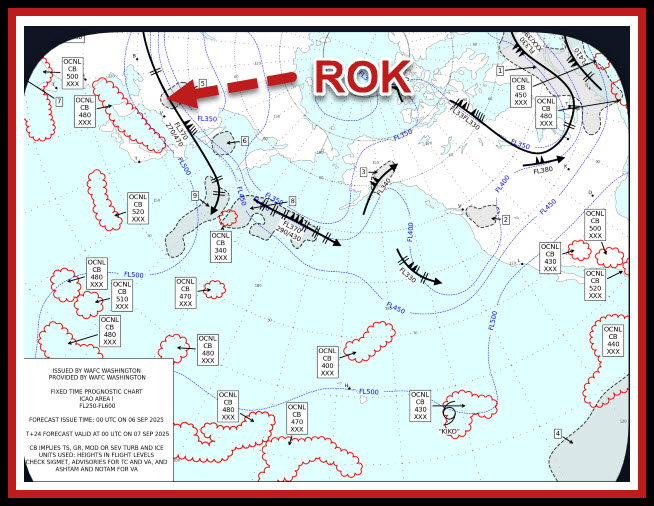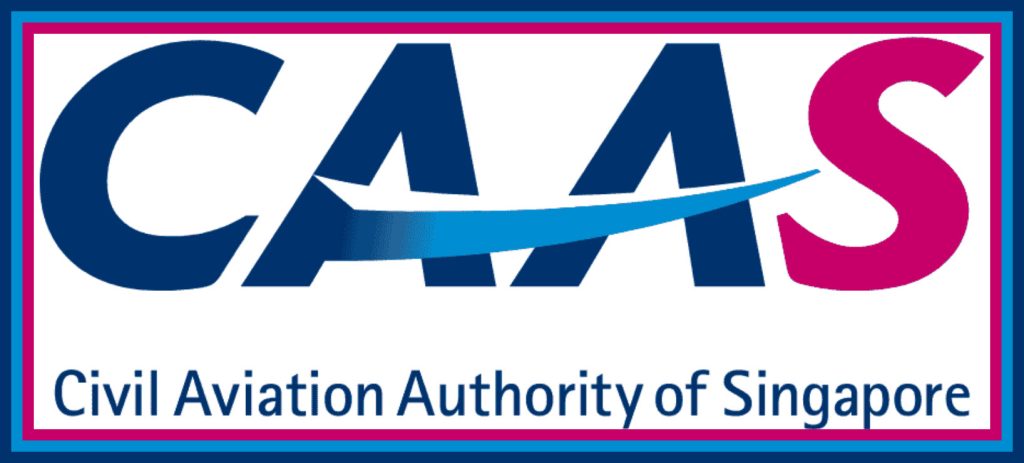Singapore Turbulence = MAJOR FLIGHT THREAT-can KOREA get ICAO to make it a priority?
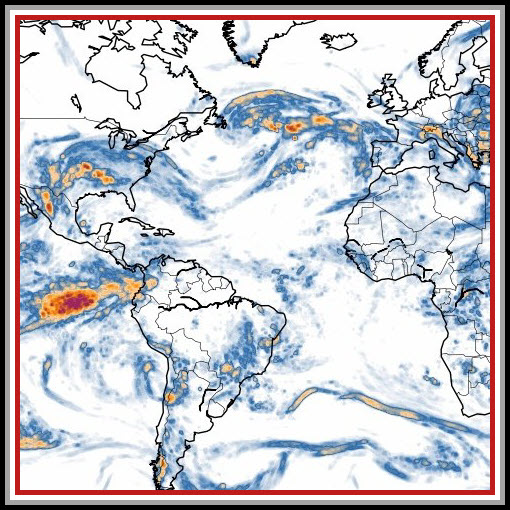
The Civil Aviation Authority of Singapore is the first aviation safety organization to have declared SEVERE AIR TURBULENCE AS A MAJOR IN-FLIGHT THREAT. That is exceptionally justified classification based on the examples cited in the article following this commentary.
This dangerous meteorological phenomenon has drawn frequent attention here:
- CLEAR AIR TURBULANCE—what is it? Is it increasing? Can it be attributed to Climate Change? Can it be predicted/detected? (2023)
- Severe Air Turbulence- what’s known and what’s being done 06/2023
- MORE ADVANCES ON TURBULENCE 12/2024
- Southwest’s Collaborative SMS reduces Turbulence IMPACT 12/2024
- Brilliant AI-based turbulence avoidance system- AVOID FAA approval DELAY??? 08/2025
This invidious weather scourge exists globally but it is not evenly distributed across the globe. While it can occur at any altitude, its geographic concentration is shaped by several meteorological and topographical factors. Here’s how it breaks down:
Global Hotspots for Atmospheric Turbulence
Why Geography Matters
- Jet Streams: These high-altitude rivers of air are strongest in mid-latitudes and are major drivers of CAT.
- Topography: Mountains disrupt airflow and create turbulence zones that can extend hundreds of miles downwind.
- Climate Zones: Tropical regions tend to produce more convective turbulence due to heat and moisture.
- Seasonality: Winter intensifies jet stream turbulence in the Northern Hemisphere; summer brings more convective activity.
Supporting Data
- The NCAR/RAP PIREP database has cataloged millions of pilot reports showing consistent turbulence patterns over the Rockies, North Atlantic, and Pacific corridors.
- Studies like the US Forest Service’s turbulence overview emphasize that turbulence is superimposed on mean wind and shaped by local terrain and weather systems.
- Research on Kolmogorov vs. non-Kolmogorov turbulence shows that different layers of the atmosphere exhibit distinct turbulence structures depending on geography and altitude.
Though this information identifies the areas of highest risk, almost all of the international airlines face flying through this threat. SUCH A BROAD SAFETY CONCERN SHOULD BE A MAJOR AREA OF PRIORITY FOR THE INTERNATIONAL CIVIL AVIATION ORGANIZATION. From 1944, the #1 mandate of the seminal Chicago Convention has been and is now AVIATION SAFETY. The CAAS action and the multiple examples, cited above, should have flagged the development of global solutions for these invisible disruptions– technical, operational, sensor-based AI predicted warnings, pilot/crew training, etc. – as a priority for ICAO’s agenda and staff. Part of this UN organization’s effectiveness is the development of consensus of its 193 Member States; that process must be (?) slow. If TURBULENCE ranks high as a global hazard, then ICAO MUST immediately muster its internal and member resources to design the most effective possible solutions ASAP.
The good news is that in 16 days its Assembly convenes in Montreal. ICAO lives by a very strict procedure; issues to be discussed at this event must be raised in working papers submitted before this group starts its once-every-three-year meeting. The Working Papers as presently available at and here is the one submitted by the Republic of Korea proposing TURBULENCE to be as “recognized in the future 2029-2031 GASP and its GASR
- Agenda Item 23: Global Aviation Safety and Air Navigation Plans TE/39 29/7/25 INTEGRATION OF CLIMATE CHANGE ADAPTATION INTO THE FUTURE GLOBAL AVIATION SAFETY PLAN (Presented by the Republic of Korea)
- 2 The Republic of Korea considers the operational impact of climate change to be ONE OF THE KEY SAFETY ISSUES AT THE STATE LEVEL, as it increasingly influencing the operational environment and posing new safety considerations for aviation operations. As climate change leads to more frequent and severe meteorological and environmental phenomena, with significant implications for flight operations, air traffic management and airport operation and its infrastructure, it might be regarded as a critical factor and incorporated as a key consideration in the development of many States in their NASP.
- …
- 3.1 The following types of occurrences, but not limited to these, are of particular concern: Increased turbulence events. Changes in atmospheric circulation patterns and increased atmospheric instability may lead to increases in the frequency and intensity of severe turbulence, particularly on long-haul and transoceanic routes. Some studies show moderate to severe turbulence frequency at cruising altitudes has increased over recent decades. This poses increased risks to passengers, flight and cabin crew, and aircraft structural integrity, as well as challenges to flight planning.
- …
- 4 These safety risks collectively represent a global aviation safety challenge that requires not only national-level responses but also COORDINATED ACTION AT THE GLOBAL LEVEL. Integrating climate change related operational safety risks into the GASP framework would promote harmonized safety strategies, strengthen cooperation, enhance global situational awareness, and build the capacity of aviation personnel and stakeholders to respond effectively, through relevant safety enhancement initiatives and activities under the GASP and its Global Aviation Safety Roadmap (GASR). Furthermore, this approach would align with other ICAO strategic goals in the 2026–2050 Strategic Plan, including adaptation to climate change and enhancing aviation resiliency.
- CONCLUSION In order to enhance Member States’ ability to address the impacts of climate change on aviation operations, it is proposed that CLIMATE CHANGE-RELATED OPERATIONAL SAFETY RISKS BE EXPLICITLY RECOGNIZED IN THE FUTURE 2029-2031 GASP AND ITS GASR. Such inclusion would support the development of targeted mitigation strategies, relevant data collection and related safety risk indicators, and capacity-building initiatives, thereby helping to ensure the continued resilience of global aviation safety in a changing climate. — END
ROK is on its last year as member of the prestigious ICAO Council. Its continued presence reflects Korea’s growing influence in global aviation policy, safety standards, and infrastructure development. PERHAPS THAT STATUS WILL INCREASE THE LIKELIHOOD OF THE FULL ASSEMBLY’S ADOPTION OF ITS WORKING PAPER? Maybe even advance its consideration in 2025- such is the urgency of this safety threat.
Singapore Airlines declare turbulence a major in-flight threat
The state has placed clear-air turbulence in the same category as mid-air collisions and incursions on runways
A Singapore Airline flight made an emergency landing in Bangkok last year because of severe turbulence
REUTERS
SINGAPORE has become THE FIRST STATE TO CLASSIFY SEVERE AIR TURBULENCE AS A MAJOR IN-FLIGHT THREAT after two incidents involving its airliners last year in which a passenger died and dozens were injured.
Abruptly shifting winds, invisible to radar, that jolt cruising airliners without warning have become so serious that the phenomenon must be classified as a “state-level operational safety risk”, the Civil Aviation Authority of Singapore (CAAS) said. That puts it in the same category as the threat from mid-air collisions and unauthorised incursions on runways.
Climate change is mainly blamed for the increasing number of encounters with clear-air turbulence around the world over the past decade. It has become the leading cause of in-flight injuries for passengers and crew worldwide.
A Singapore Airlines Boeing 777 from London to Singapore was the victim of one of the worst incidents in May last year. Over Burma it flew into roiling air currents that whipsawed the aircraft, throwing unbelted passengers and personnel into the ceiling and then onto the floor. A 73-year-old Briton died of a heart attack and dozens were injured.
In September last year, a passenger and a cabin crew member were injured on a Guangzhou-bound flight that ran into turbulence over Hong Kong.
“The recent spate of serious aviation safety incidents around the world is a timely reminder that we must stay vigilant and not take safety for granted,” said HAN KOK JUAN, the CAAS director general, as the authority set out 45 actions for its national airlines[1].
Other Asian airlines have changed crew procedures, such as methods of serving hot drinks and more extensive use of the seatbelt sign. Korean Air stopped serving ramen instant noodles to avoid scalding injuries.
The Singapore Airlines flight SQ321 on the tarmac at Suvarnabhumi International Airport in Bangkok
LILLIAN SUWANRUMPHA/AFP
In the United States last week, two passengers on a United Express flight were treated in hospital and 37 others received medical attention after the aircraft ran into fierce turbulence over Texas. In the US at least 163 people sustained serious injury from turbulence between 2009 and 2022.
Singapore joined Korea and Japan last year in urging the International Civil Aviation Organisation to recognise turbulence explicitly as a threat in its 2026 global aviation safety plan and pave the way for stronger regulation and research.
Global bodies have been co-ordinating action on turbulence. The International Air Transport Association has a “Turbulence Aware” programme that enables aircraft to share data on turbulence with nearby aircraft.
ARTIFICIAL INTELLIGENCE is being developed to predict dangerous shifts in the jet streams, the narrow currents of fast–flowing air at around 30,000 feet in which airliners cruise. The streams, which move from west to east, are powered by differences in the temperature of air masses.
Studies have shown that the more extreme weather caused by climate change is creating fiercer changes in wind speed and direction, or windshear, involving the jet streams. The increase in airline traffic in recent decades has contributed to the rise in clear-air turbulence encounters because more planes are flying through the turbulence-prone corridors; for example, over the north Atlantic and Asia.
[1] Enhance cabin safety in the areas of turbulence management, evacuation control, and managing disruptive passengers Recent incidents, such as ground collisions and turbulence occurrences, have highlighted the crucial role of cabin safety efforts in ensuring the well-being of passengers onboard, especially as air travel demand increases. One area is aircraft evacuation. ,,…These include passenger safety briefing videos, safety demonstrations, passenger announcements, safety information cards, and crew training to mitigate the risks of turbulence, Singapore air operators have implemented several measures. These include incorporating turbulence-related scenarios as part of evidence-based training for flight crew. This ensures that they are well-prepared to manage turbulence encounters. The use of modern weather radars and turbulence awareness applications also enables flight crew to avoid areas of potentially hazardous turbulence. Internationally, CAAS IS WORKING WITH SEVERAL OTHER LIKE-MINDED CIVIL AVIATION AUTHORITIES TO PROMOTE THE USE OF ENHANCED TURBULENCE FORECASTING AND ONBOARD TURBULENCE DETECTION SYSTEMS AND TO SHARE REAL-TIME TURBULENCE DATA. While these mitigating actions have been effective, we recognise this as a developing safety risk area where more work can be done. Hence, there are several actions in this NASP designed to address this risk

